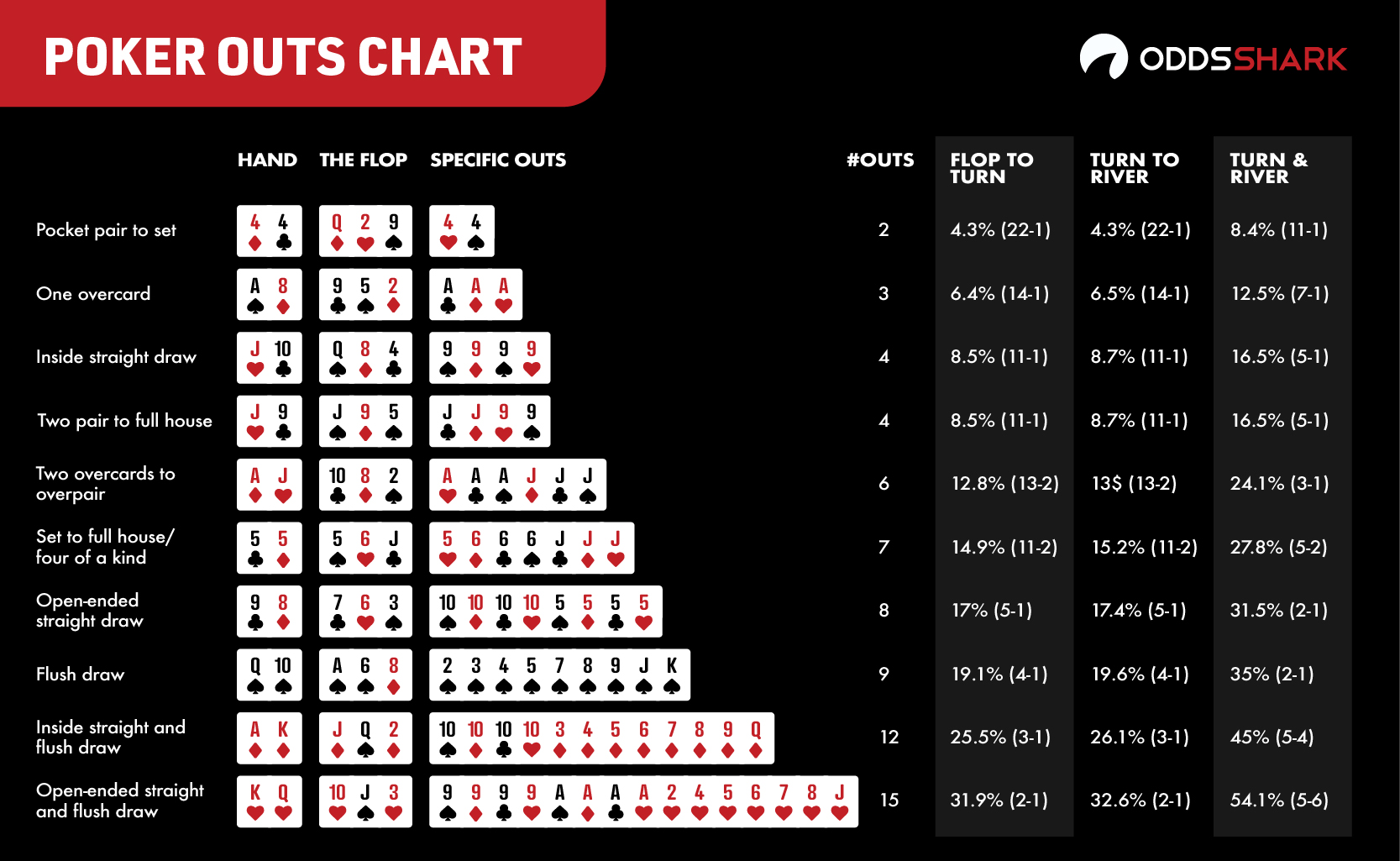

Playing poker is about playing the odds. The following list gives the odds for outcomes in Texas Hold'em hands. When you realize how heavily the odds are stacked against you, you may want to rethink going all-in before the flop with two suited cards. Use the odds to your advantage:
How To Figure Out Pot Odds In Texas Holdem
The Texas Hold'em odds for each of the different situations have been given in both percentage and ratio odds, so use whichever format you feel comfortable with. Other poker odds charts. For more useful odds charts that you can use for when you are working out whether or not to call when on a drawing hand, use the following tables. The most straightforward explanation of how to calculate pot odds is to compare the total number of unknown cards to how many outs you have, and then do some simple division. For example, if you are four to a nut flush on the turn of a Texas Hold 'em game, there are 46 unknown cards, (52 minus your 2 pocket cards and 4 on the board). Poker Odds Cheat Sheet (for Texas Hold'em) Get your pot odds cheat sheet below. You can use this to determine the number of outs required to continue based on the pot odds you are being offered. You can also use it to convert between percentages, required outs and ratios for all kinds of situations in poker.

Pot odds = pot size:amount to call where pot size includes any and all bets on the current street (pre-flop, flop, turn or river) as well as the amount in the middle. The final sum is expressed as a ratio. Pot odds example. The pot is £400 and there is a £200 bet in front of you. You would follow the steps below to determine your pot odds.
How To Work Out Pot Odds In Texas Holdempot Odds In Texas Hold Em

Playing poker is about playing the odds. The following list gives the odds for outcomes in Texas Hold'em hands. When you realize how heavily the odds are stacked against you, you may want to rethink going all-in before the flop with two suited cards. Use the odds to your advantage:
How To Figure Out Pot Odds In Texas Holdem
The Texas Hold'em odds for each of the different situations have been given in both percentage and ratio odds, so use whichever format you feel comfortable with. Other poker odds charts. For more useful odds charts that you can use for when you are working out whether or not to call when on a drawing hand, use the following tables. The most straightforward explanation of how to calculate pot odds is to compare the total number of unknown cards to how many outs you have, and then do some simple division. For example, if you are four to a nut flush on the turn of a Texas Hold 'em game, there are 46 unknown cards, (52 minus your 2 pocket cards and 4 on the board). Poker Odds Cheat Sheet (for Texas Hold'em) Get your pot odds cheat sheet below. You can use this to determine the number of outs required to continue based on the pot odds you are being offered. You can also use it to convert between percentages, required outs and ratios for all kinds of situations in poker.
Pot odds = pot size:amount to call where pot size includes any and all bets on the current street (pre-flop, flop, turn or river) as well as the amount in the middle. The final sum is expressed as a ratio. Pot odds example. The pot is £400 and there is a £200 bet in front of you. You would follow the steps below to determine your pot odds.
How To Work Out Pot Odds In Texas Holdempot Odds In Texas Hold Em
1 percent (1-in-100): Percentage of time that no player holds an Ace or a King at a table in a 10-handed game
Kitchen Workshop is located on the casino floor, patrons must be over 18 and not prohibited from entering the casino or Crown Entertainment Complex for any reason. Please note credit card payments incur a service fee of 1.2%. Image for illustration purposes only. Kitchen Workshop is located on the casino floor, so patrons must be 18 years or over. Crown Resorts wishes to advise that our Food and Beverage operations at Crown Melbourne will be temporarily closed until further notice. PH: +61 3 9292 5777 WELCOME TO KITCHEN WORKSHOP. Casino kitchen workshop.
1 percent (1-in-100): Percentage of time that if you hold two suited cards, you'll flop a flush
6 percent (about 1-in-20): Percentage of time that five community cards will give pocket suited cards a flush Planning poker jira.
6 percent (about 1-in-20): Percentage of time that you'll be dealt a pocket pair
8 percent (about 1-in-12): Percentage of time that you'll hit at least trips after having a pair on the flop
12 percent (about 1-in-8): Percentage of time that you'll flop trips if holding a pocket pair
12 percent (about 1-in-8): Percentage of time that two more cards will flop in the same suit as a suited pocket pair
19 percent (about 1-in-5): Percentage of time that the five community cards will at least trip your pocket pair
32 percent (about 1-in-3): Percentage of time that you'll pair one of your cards on the flop (with no pocket pair)
33 percent (about 1-in-3): Percentage of time that you'll make a full house or better after having trips on the flop
35 percent (about 1-in-3): Percentage of time that you'll make a flush on the turn or river if you have four cards to a flush after the flop